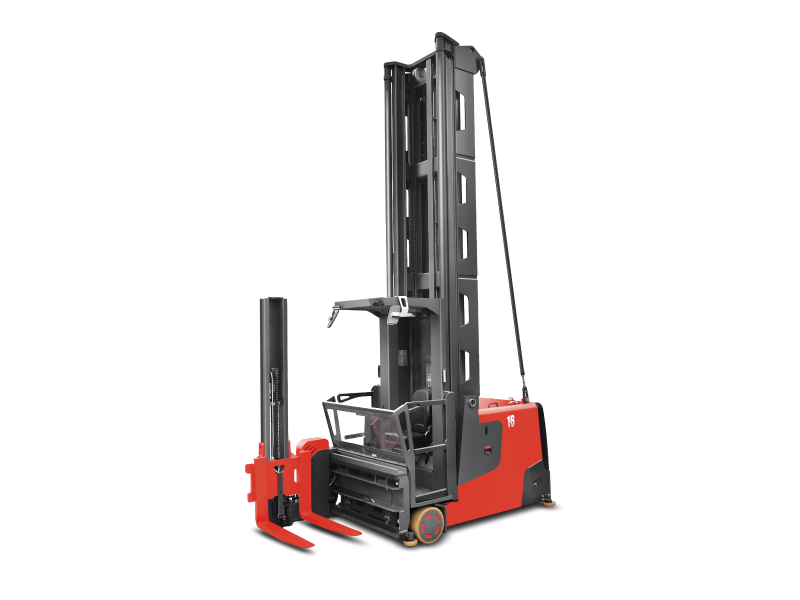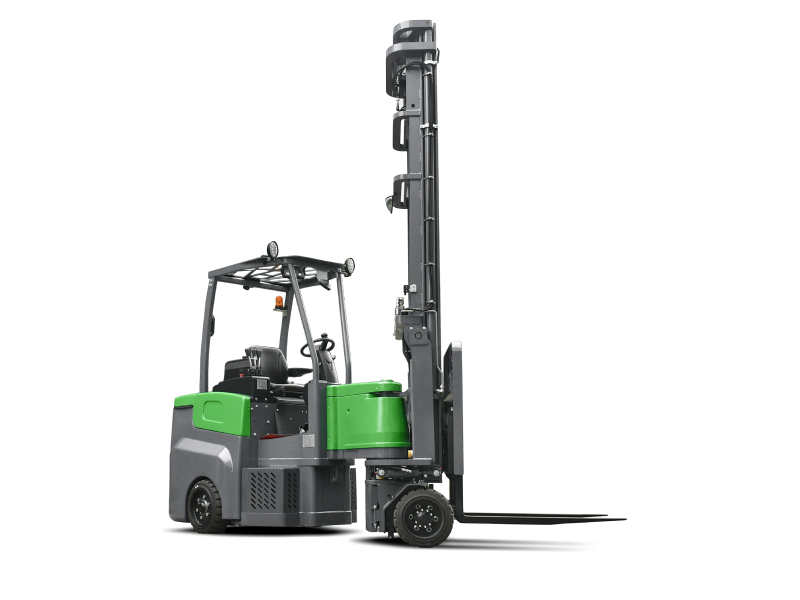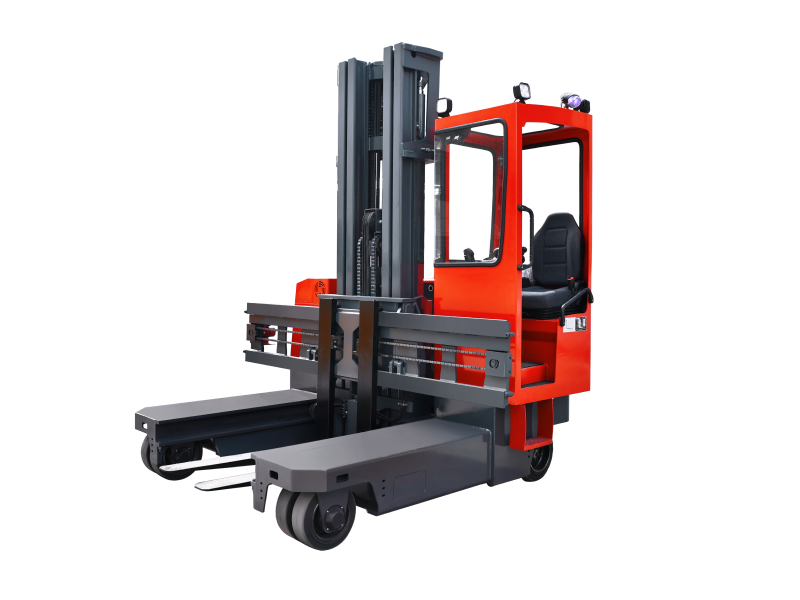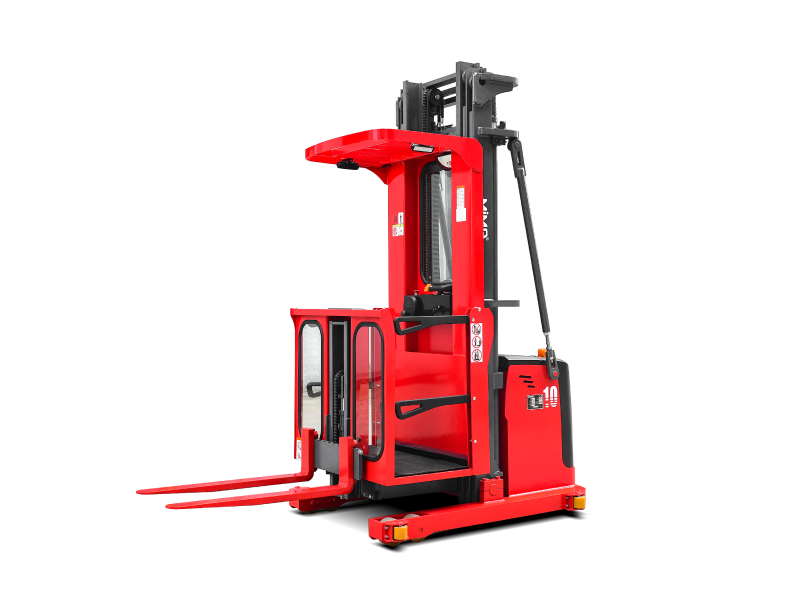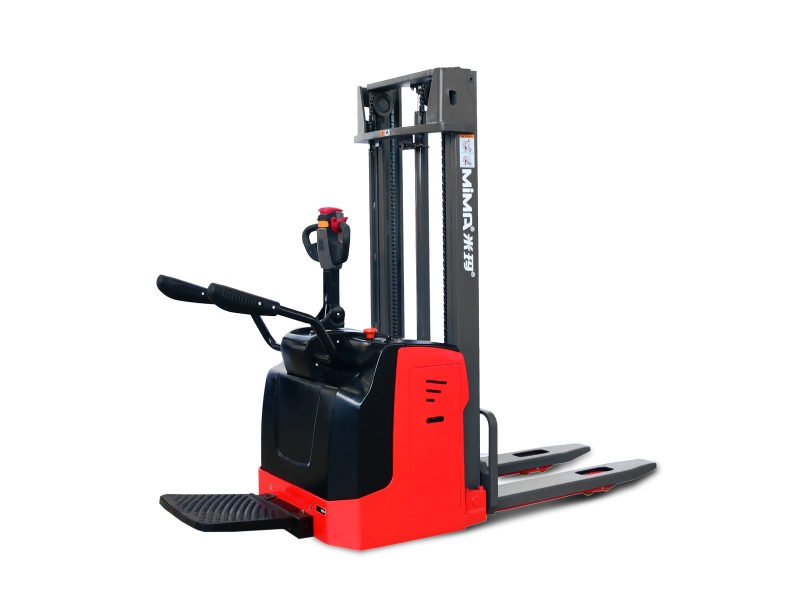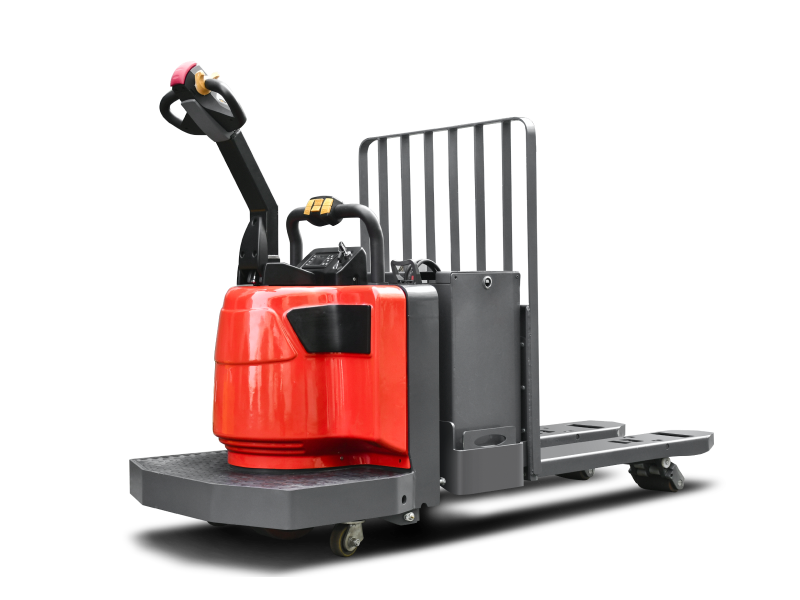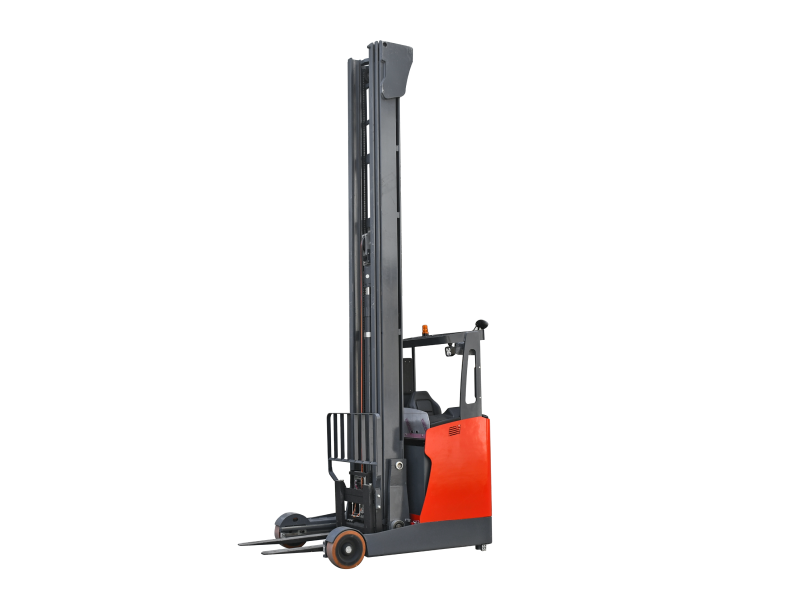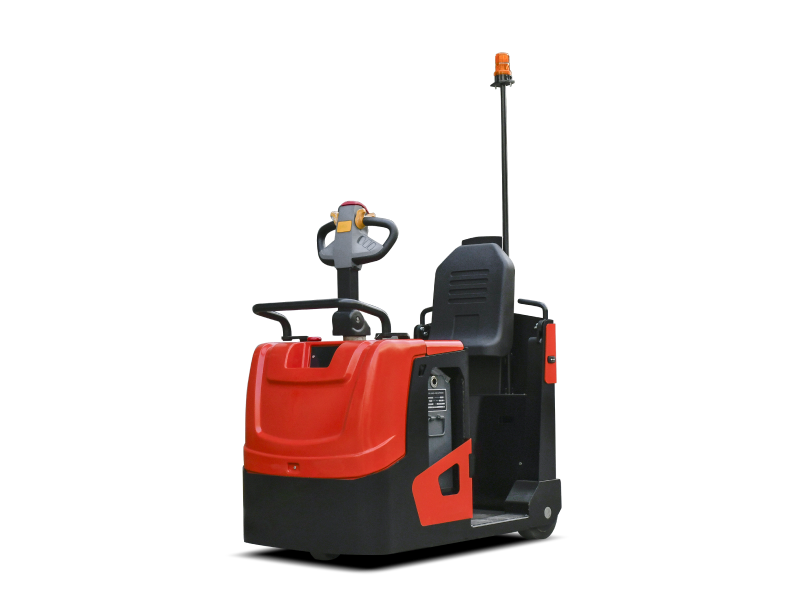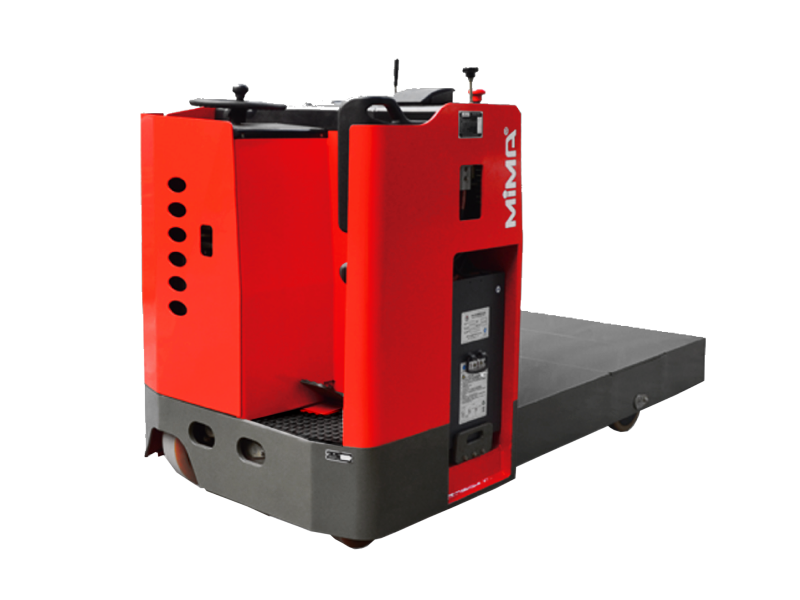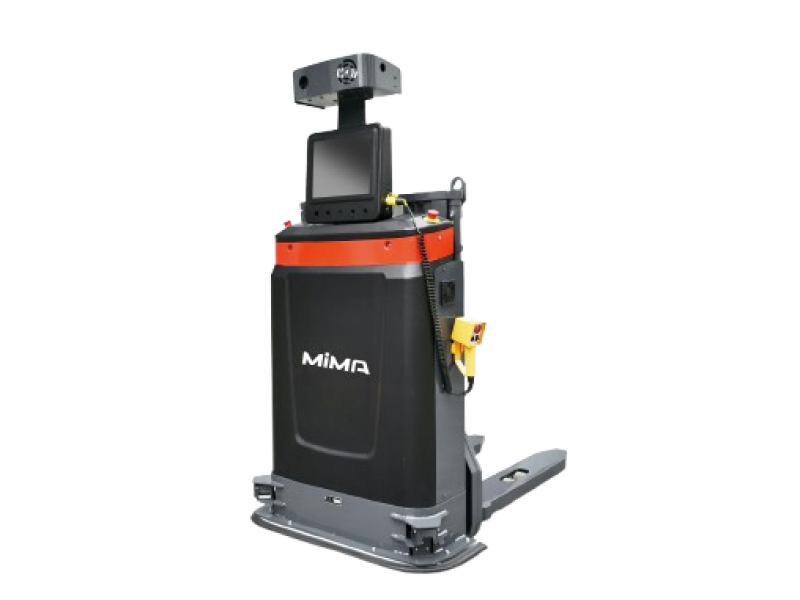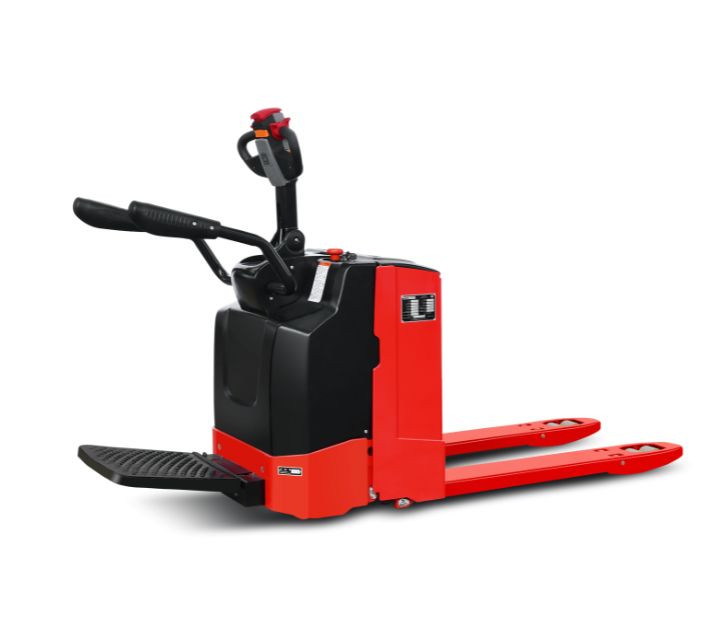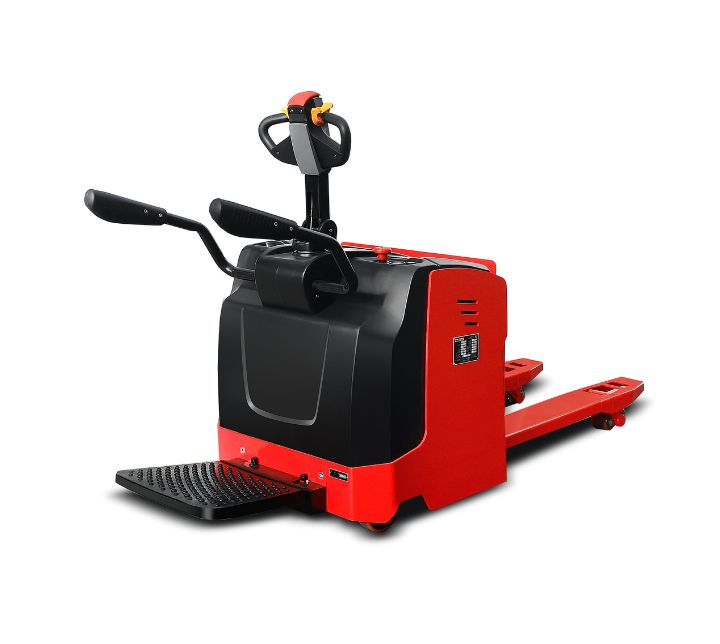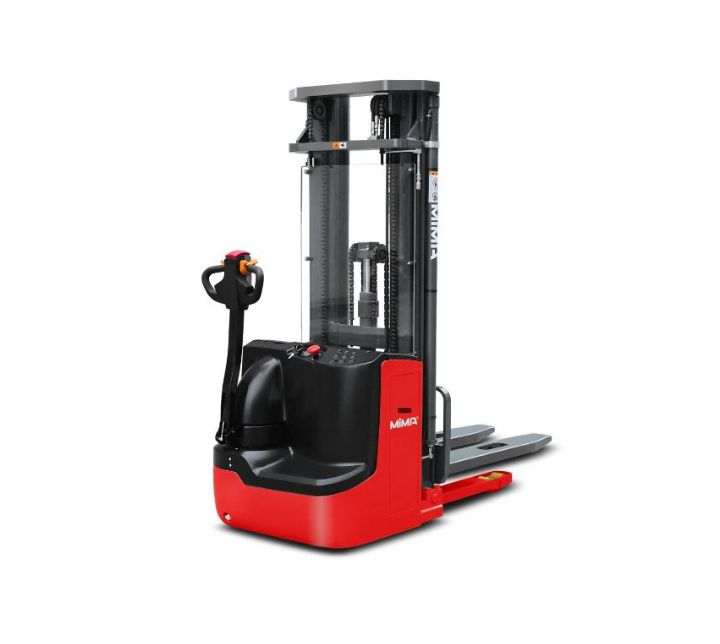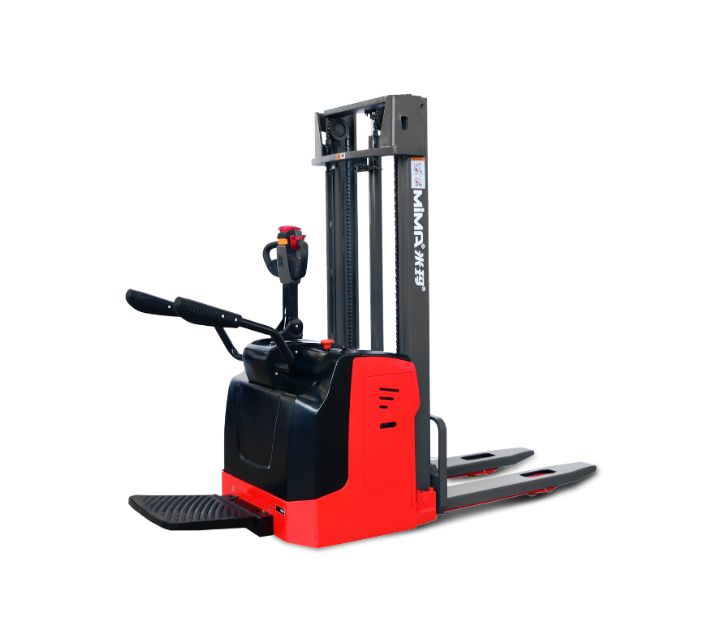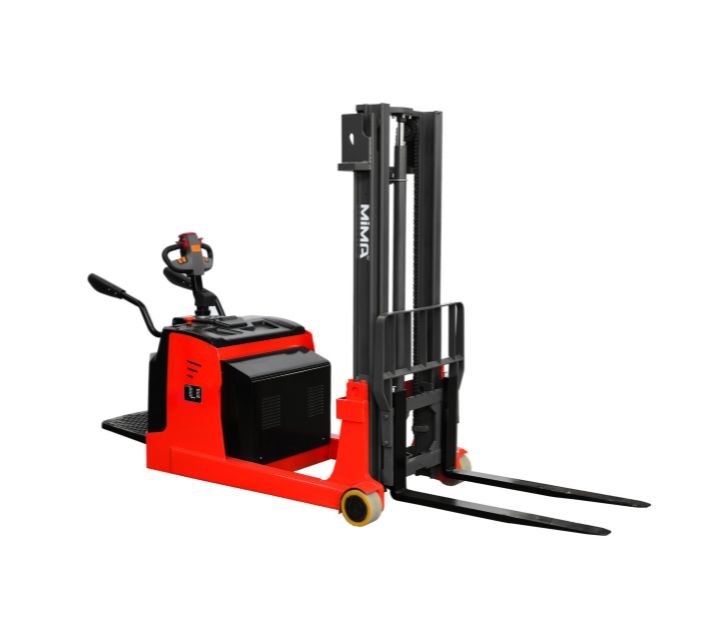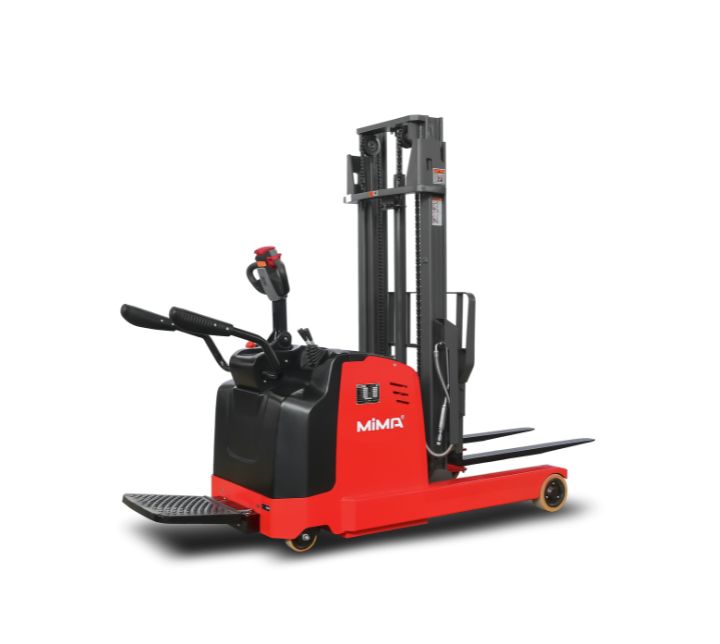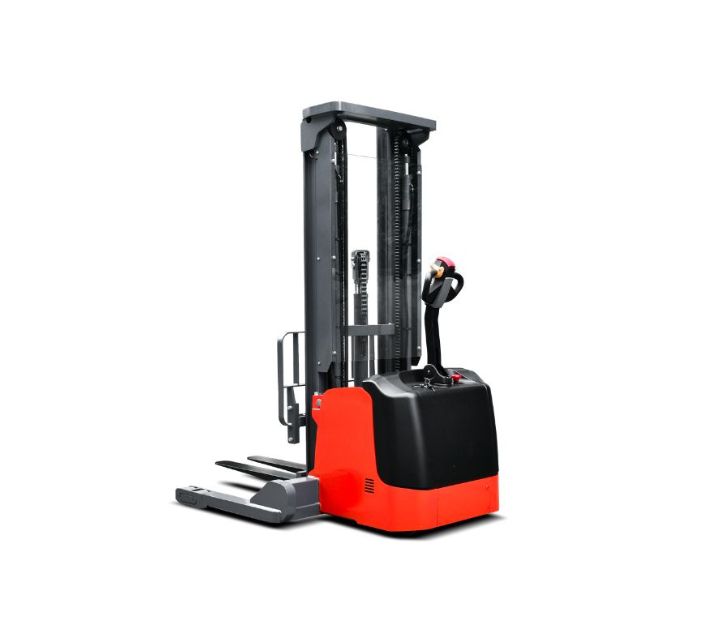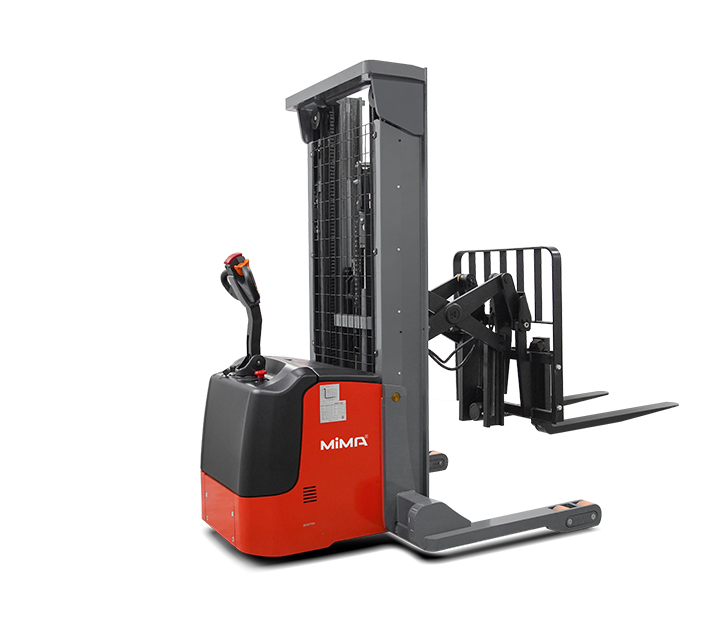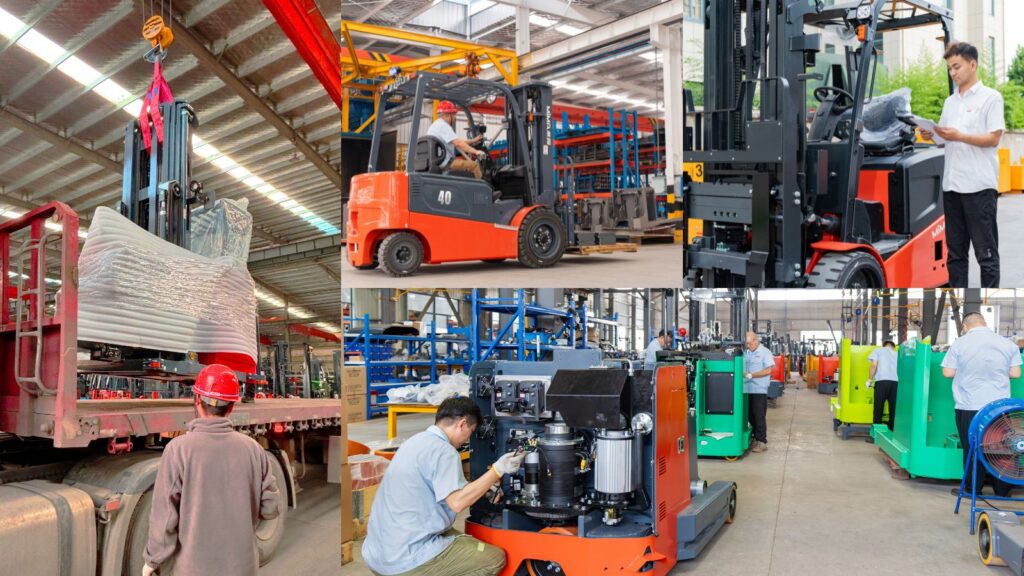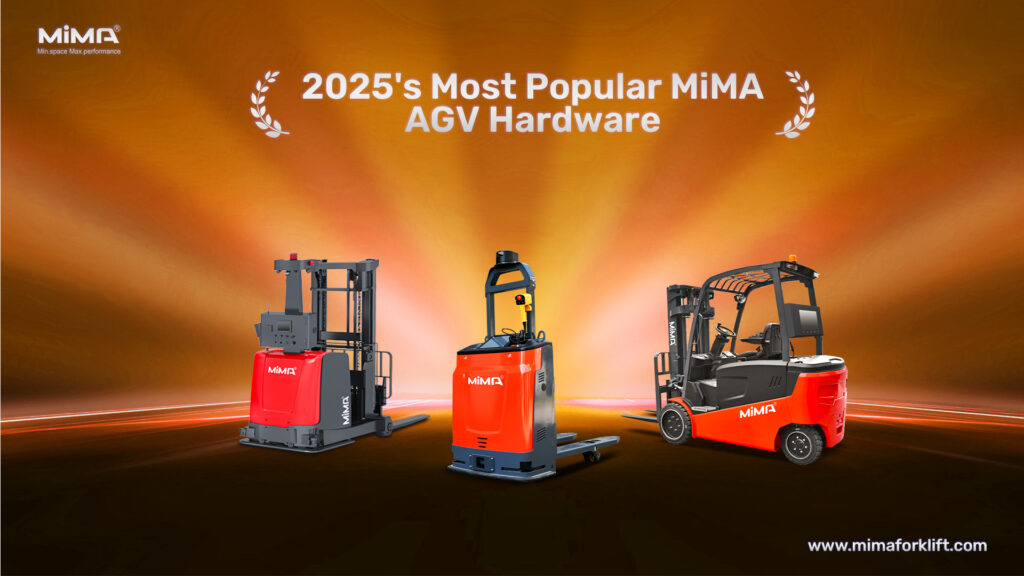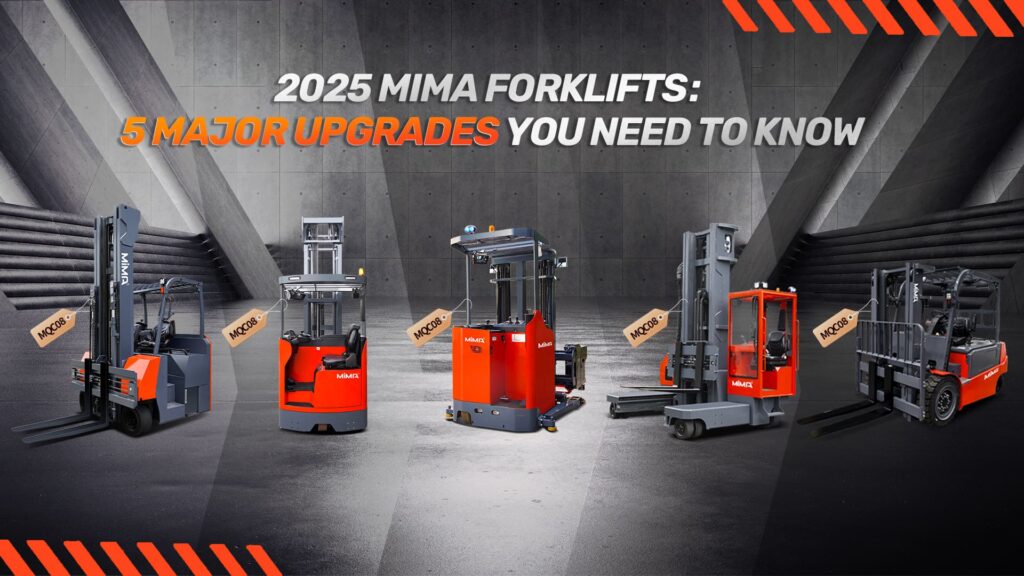Understanding MiMA’s Two Main Product Lines
In the world of modern warehousing, efficient material handling is essential. MiMA, a well-known name in electric warehouse vehicles, offers two primary product categories designed for different material handling needs: pallet trucks for horizontal movement and pallet stackers for vertical storage operations.
Pallet Trucks: The Horizontal Transport Specialists
What they do best: Move medium to heavy loads across long distances on a single level. These workhorses shine in:
- Large retail distribution centers
- Manufacturing plant floors
- Freight yards and loading docks
- Anywhere you need to move palletized goods without lifting them to heights
Key series breakdown:
- ME20-60 Series: Your standard electric pallet trucks (2-6 ton capacity) with three fork width options (570mm/680mm/715mm)
- MEB60: The heavy lifter with 6-ton capacity and side-pull 420AH battery for continuous operation
- ME36: Specialized for American standard pallets with optimized fork design
Why choose these? When your workers spend more time moving across warehouse floors than stacking, these save time and reduce fatigue with features like:
- Standard electric steering (no muscle strain)
- Speed up to 12 km/h when unloaded
- Safety wings that automatically reduce speed when deployed
Pallet Stackers: The Vertical Storage Experts
Where they excel: Combining short-distance transport with precise stacking in:
- Multi-level racking systems
- Supermarket backrooms
- E-commerce fulfillment centers
- Narrow aisle warehouses
Series highlights:
- MBC/MB Series: Basic to advanced stackers (1.5-2 ton) with 5m lift heights
- MBB Series: The space-savers (900kg-2 ton) designed for elevator use and multi-floor operations
- MFA Series: Compact performers (1.5-2 ton) that work in aisles as narrow as 2.7m
- MBF20/MBG16: Specialized for American standard double-face pallets
Key advantages:
- AC brushless motors mean no maintenance downtime
- Soft-landing buffers protect fragile goods
- Multiple stability systems (3-point or 5-point designs)
- Some models rotate 90° for perfect pallet positioning
Feature Comparison: What Really Sets Them Apart
While both types move pallets, their designs differ significantly where it matters most:
Operation Methods
Pallet Trucks use steering wheels or stand-on platforms because:
- Operators face forward during long-distance moves
- Need clear visibility while traveling at higher speeds
- Standing reduces fatigue over extended periods
Pallet Stackers employ rotating handles (±90°) because:
- Operators often work sideways when positioning loads
- Need precise control when lifting near racks
- Handle positions activate safety brakes automatically
Steering Systems
Shared feature: Electric power steering available across premium models
Trucks prioritize:
- Full electric steering standard on all models
- Larger steering wheels for comfort during constant use
Stackers offer:
- Mechanical steering on basic models (cost savings)
- Optional electric steering for high-use scenarios
- Some models with joystick-style controls for precision
Braking Technology
Common safety features:
- Anti-rollback on inclines
- Emergency stop buttons
- Speed reduction when turning
Truck-specific:
- Wider turn radius requires automatic speed limiting
- Travel speed up to 12 km/h demands stronger brakes
Stacker-specific:
- Height-based descent control (slows near ground)
- Handle-position braking (stops when vertical)
- Some models have “safety wings” that reduce speed when extended
Wheel Configurations
Trucks typically use:
- Larger diameter wheels (smoother over long distances)
- Optional rubber tires for outdoor/rough surfaces
- Heavy-duty bearings for constant movement
Stackers feature:
- Compact wheels to minimize overall height
- Specialized tread patterns for clean floor surfaces
- Some with non-marking rubber for retail environments
Real-World Selection Guide
-
Scenario:
- Moving 4-5 ton pallets of drinks
- 100-200 meter transports between loading docks and storage
- Smooth concrete floors
Best choice: ME40 Pallet Truck
Why:
- 4-ton capacity handles full beverage loads
- 685mm forks fit standard Euro pallets perfectly
- Electric steering reduces operator fatigue during long shifts
- Optional rubber tires provide extra traction
-
Scenario:
- Storing 1.2 ton parcels on 4m high racks
- Working in aisles under 3m wide
- Frequent elevator use between floors
Ideal solution: MBB16 Stacker
Key benefits:
- 1600kg capacity covers parcel weights
- 5500mm lift reaches upper racks
- Only needs 2.85m turning radius
- Folding forks and low height fit elevators
- Lithium battery option for all-day use
-
Scenario:
- Handling 1.8 ton building materials
- Working with American standard pallets
- Need to reach deep into racking
Perfect match: MBF20 Stacker
Advantages:
- 2000kg capacity for heavy materials
- 585mm forward reach handles deep storage
- Specifically designed for US pallet dimensions
- Low chassis provides stability with top-heavy loads
- Clear view mast improves visibility
-
Scenario:
- Moving 3 ton frozen goods
- Operating in -25°C environments
- Limited battery change opportunities
Recommended: ME30 Pallet Truck with:
- 3000kg capacity for frozen loads
- Lithium battery (performs better in cold)
- Enclosed drive system (protects from moisture)
- Heated handles (operator comfort)
- White corrosion-resistant finish
Making Your Final Decision
- Define Primary Use: Pure transport = pallet trucks, stacking required = stackers
- Assess Load Needs: >2 tons prioritize ME series, light stacking consider MBB/MB
- Measure Workspace: Note aisle widths, rack heights, and floor conditions
- Consider Runtime: High-frequency operations benefit from lithium batteries
- Prioritize Safety: Crowded areas need models with safety wings and speed controls
Ask these key questions:
- What’s your maximum load weight?
- Under 2 tons? Consider stackers
- Over 2 tons? Look at pallet trucks
- How high do you need to reach?
- Ground-level only? Pallet trucks suffice
- Above 1.6m? Stackers are mandatory
- What’s your typical travel distance?
- Under 50m? Stackers work well
- Over 100m? Pallet trucks save time
- How narrow are your aisles?
- Over 3m? Most models fit
- Under 2.7m? Only MFA/MBB series
Remember: MiMA offers free site evaluations to help match equipment to your specific needs. Their experts can analyze your workflow, measure your spaces, and recommend the perfect configuration – often saving 20-30% in hidden costs by avoiding mismatched equipment.
Whether you’re moving heavy loads across vast warehouses or stacking goods in tight urban spaces, MiMA’s engineered solutions combine advanced components with localized service support for reliable performance day after day.
📞: +86 551 6219 3112



